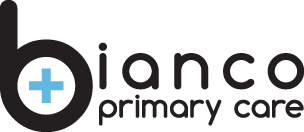Have you ever looked in the mirror or hopped on a scale and thought “I sure would like to be more toned” or “I need to lose weight”?
Have you ever carried a heavy box or gone up the stairs too quickly and thought “boy, I need to get in shape”?
——————-
It’s not a new concept that these goals can be achieved through the same healthy lifestyle changes. However, the idea of how much work is required to achieve these goals can often be overwhelming. Because of that we never get started more often than not.
The point I want to stress in this blog is that simply increasing daily, intentional activity has the potential to change your body composition for the better. This will also improve your blood pressure, cholesterol levels, and reduce the chance of developing heart diseases and stroke.
No minimum miles needed to be walked or run. No need to monitor your heart rate zones throughout your workout or exercise in a fasted state.
Let’s put aside the exercise myths and focus on the simple and overlooked basics of how to exercise for cardiovascular health.
Cardiovascular Training Recommendations
One of the foundational principles of strength training says in order to grow muscle size and strength, the musculoskeletal system must be repetitively taxed. In the same way, cardiorespiratory training is also contingent on the specific adaptation to imposed demand (SAID) principle. The human body will adapt to the type of exercise, intensity, and environment in which it trains.
I want to encourage you that no matter how short of time, and no matter the equipment used, repetitive training will cause adaptation. Adaptation, when following an appropriate plan, will progress you to your goals.
Depending on your time available and desired outcome, let’s talk about how to modify general exercise prescriptions for your goals. The American Heart Association recommends 150 minutes of moderate exercise per week or 75 minutes of vigorous exercise per week. Ideally, your week consists of both, but if you need to keep your routine simple and consistent, 30 minutes of moderately strenuous cardiovascular exercise, ranging from about 4-6 on a 1/10 scale, 5 days a week, will meet the official recommendations.
Modifications may be needed depending on any known or suspected medical/ health limitations. (In this case, I would suggest seeing a fitness professional such as myself who is qualified to give you more personalized recommendations to follow.)
Now, if you look at 150 minutes and think: “not possible right now”, a smaller goal may be needed as you begin an exercise program from scratch, and that’s ok! Remember what I said earlier about adaptations on imposed demands? A consistent schedule of 5 to 10 minutes a day is enough to build on, and in time, reach 30 minutes a day. To help you hit the general recommendations and then some of your other goals, your programming needs to be as specific as possible.
How to Program for Your Cardio
Most trainers use the acronym FITTE principle to create a specific program. Research has proven, and I bet that many of you can attest, that in any new habit change the more specificity you use in outlining how to reach your goals, the more consistent you are in your habit change behaviors.
FITTE stands for frequency, intensity, time, type, and enjoyment. I encourage you to use this example to make your own program based on your goals. If improving general cardiorespiratory fitness is your current goal, in a bout of exercise you should aim to feel like a 4-6 exertion level on a scale of 1-10.
If your fitness goal is to improve performance and complement a strength training program then intervals can be useful to increase the workload and while allowing you to keep up your endurance. The more difficult interval should feel like a 7-8 on a scale of 1-10.
Finally, if your goal is an increase in muscular power and strength short, repetitive intervals that feel like a 9/10 on a 1-10 scale are effective.
Now using the above intensity recommendations based on your goals, you can use this table example to create your own program. Be specific to what types of cardiovascular training you enjoy most, and the amount of realistic time you have available.
| F (Frequency) | 4-5 days/ week |
| I (Intensity) | 65-75% HR Max or 4-6 on a 1-10 scale. |
| T (Time) | 30-45 minutes |
| T (Type) | Neighborhood walk or water aerobics |
| E (Enjoyment) | Love exercising outdoors during the fall, when it’s too hot or too cold the pool is ideal. |
Costs of Inactivity to the Population and Exercise Modalities
According to a study by the Journal of Medical Science in Sports and Exercise, sedentary lifestyles are the leading cause of preventable death via a variety of disease processes including diabetes, hypertension, obesity, osteoporosis, cardiovascular disease, and lipid (cholesterol) disorders.
A medical paper discussing physical activity and associated diseases and disorders reported that the longer the period of inactivity, the greater the degree of systemic(structural) dysfunction.
I want to encourage you today to create and begin a personal, cardiovascular program that, most importantly, uses a type of exercise that you enjoy. My clients who choose varieties of cardiovascular exercises they enjoy end up sticking with their program longer than other clients I’ve had who choose their cardio based on what the science at the time or opinion of their friends says is best.
I suggest that the best modality of exercise is the one you will enjoy, and therefore will engage in the most often. Now let’s get you moving!


